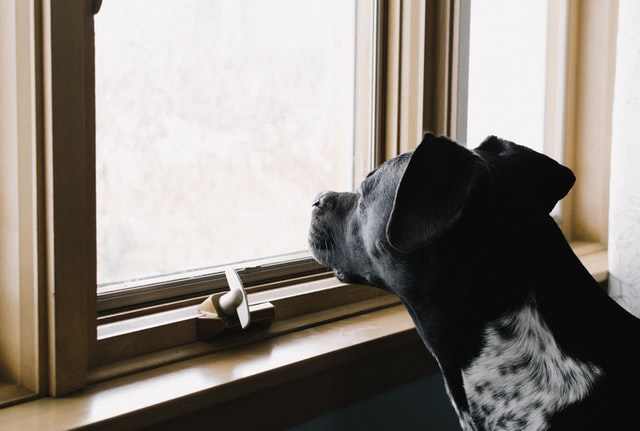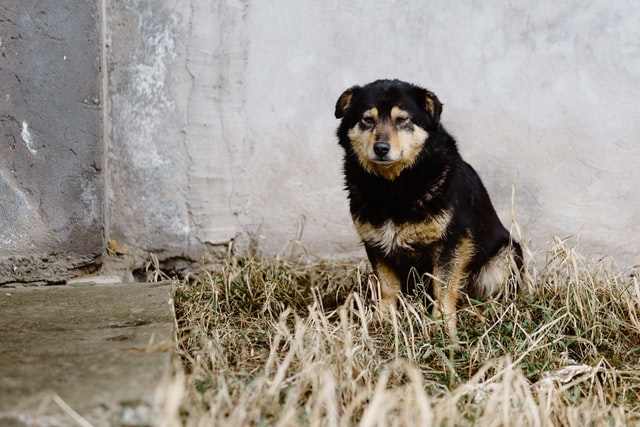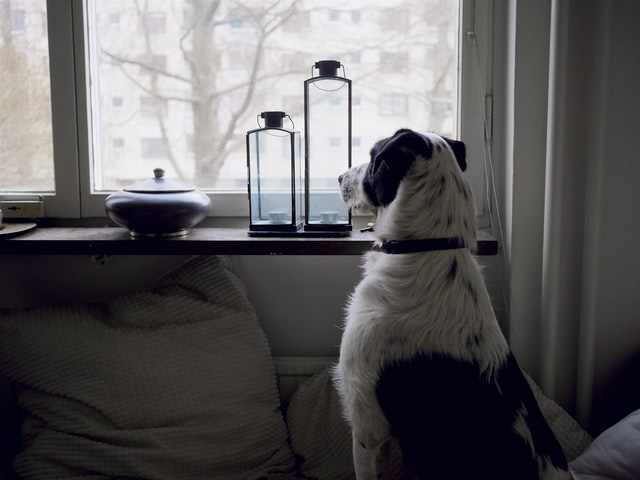Going back home after a long day of work to a loving dog is always a relief, your dog is always excited to see you and never fails to help you leave all the stress at the doorsteps.
Living alone with a dog and having to work a full-time job and sometimes 12 hours shifts can be hard on your dog, and you need arrangements for the safety and emotional health of your partner.
Many dog owners decide to crate train their dogs to provide a safe environment when not supervised, but how long can you leave a dog in the crate, and can you crate your dog for 12 hours?
You can not crate your dog for 12 hours, it’s cruel and will impact the mental health of your dog, the crate is mainly used for sleeping at night and a couple of naps during the day, your dog needs activities and enough room to play and walk around even when left alone.
Although dogs love the company of their owners, they can handle being alone if they get the attention they need when you’re back home, but 12 hours is too much time to spend in a crate.
Can I crate my dog for 12 hours at night?
Dogs are polyphasic sleepers, meaning that they sleep multiple times during the day for 1 to 2 hours segments and wake up for a similar time totaling about 12 hours of sleep.
However, they spend a good chunk of their wake time just loafing, especially at night, so adult dogs can spend an entire night in the crate and stretch that to around 12 hours if they get enough exercise and activities when they’re out of the crate.
Young puppies on the other hand although they spend more hours sleeping but can’t handle 12 hours in the crate even at night.
Young puppies can’t hold their bladder for a long time, and will need a potty break at night until they reach the age of 3 to 4 months, by then they can hold it for the night but not for 12 hours.
How long can dogs hold their pee?
Working for long or inconsistent hours might have you worried about how long your dog can hold his pee and if you’re going back home to an incident.
How long dogs can hold their pee depends on many factors like size, health diet, and mainly age.
Larger breeds have bigger bladders and can hold their pee for longer, and the healthier the dog the longer he can hold it.
Age is the main factor in determining how long can a dog hold his pee, and it changes drastically during the lifetime of the dog.
| Puppy (<6 months) = | 1-3 hours |
| Puppy (>6 months) = | 2-6 hours |
| Adult (<7 years) = | 6-8 hours |
| Senior (>7 years) = | 4-6 hours |
| Senior (>12 years) = | 2-4 hours |
Adult dogs can hold their pee for up to 10-12 hours if needed, but that doesn’t mean that they should. The average adult dog should be allowed to relieve itself at least 3-5 times per day. That’s at least once every 8 hours.
How long can a dog stay in the crate overnight?
Generally, a dog should spend the night in the crate go for a walk in the morning to do his business, and start his day with some exercise before going back home especially if you’re leaving for work.
Typically 7 to 8 hours is how long a dog can stay in the crate overnight, and that’s also the average time a dog can hold his pee.
Of course, adult dogs can stay up to 12 hours in the crate if they need to like we’ve explained earlier, but this should not be recurrent.
Is it OK to leave a dog alone for 12 hours?

Dogs are very social animals, they need to interact with us and have people or other pets around to enjoy themselves and thrive.
Dogs can adapt easily to new situations and can be conditioned to spending time alone if you can provide the attention they need when you’re back home.
Dogs are good at keeping themselves entertained on their own so providing toys and space for them will help them spend up to 12 hours alone.
However, it would really be hard on your dog to just leave him alone for 12 hours and that is way too long, he can probably handle it but it doesn’t mean you should.
We strongly recommend that dogs don’t spend more than 4 to 6 hours alone, it’s easier for them and they will be emotionally better and more active when you come home.
How to leave a dog alone for 12 hours?
Again we must alert that having a dog alone for 12 hours is just too long, and it must be an exception, not an everyday thing.
Having to work 12 hours shifts, and having a dog is a tough situation if you live by yourself that’s why you need an alternative to help you keep your dog entertained and safe.
However, for an exceptional 12 hours long absence, there are preparations you can make to keep your dog safe home while you’re gone.
- Prepare a dog-proof zone using dog gates or a playpen, and don’t use a crate or connect it to the playpen.
- Exercise your dog before you leave to get the energy out, if you can’t leave the house mental challenges and puzzle games are good.
- Leave your dog with puzzle games like the kong that you can fill with treats and a chew toy for him to relax.
- Provide your dog with enough water, and have multiple bottles just in case one gets spilled.
- Avoid making a scene when leaving the house and make it casual, also when coming back home take a few minutes before playing with your dog.
- Make sure the area in which you’ve installed the playpen has enough sunlight a good airflow and nothing disturbing.
How long can you leave a dog in a crate without water?
Dogs can survive without water for 72 hours, but surviving is not what we’re looking for, dehydration would have some consequences on the dog.
Typically dogs can go 6 to 10 hours without water and no side effects, so if you have to leave for some time and you’re afraid your dog’s water bowl get’s spoiled or you’ve forgotten to top it don’t worry he can handle it.
Leaving your puppy for 12 hours is another story, and you have to make sure they have access to water, and having multiple bottles around in case it gets spilled is important.
In a crate the dog can easily get his water bottle spilled, so 6 hours is long enough and you need to check on your dog.
6 to 8 hours is the maximum time a dog should stay alone in the crate anyway, so water would not be your biggest problem if you’re crating for 12 hours straight.
Is it cruel to crate a dog while at work?
Crating itself has nothing cruel about it, as long as your dog is not left in the crate for too long and is having enough quality time with you.
Working regular hours is fine, you just need to exercise your dog and prepare for some quality workout when you get back.
More than 6 to 8 hours is not a good idea and is in fact cruel, your dog will get bored and could become anxious.
Can I crate my dog working a full-time job?

By full-time job we mean a regular 7 to 8 hours shift, and yes it is possible to crate a dog for 8 hours if you plan it right.
If you have other alternatives it would be better for your dog because it’s just too boring for him, and he needs some real quality exercise and play sessions before going and after coming home from work.
It is always better to find an alternative to crate training while at work, a playpen, or having someone check on the dog and let him out for a potty break is even better.
Alternatives to the crate
Many people are considering having a dog and the only thing keeping them from it is that they work full-time jobs and live alone.
It’s not easy to have a dog when you can’t be home for an extended period of time, or having to work for long shifts like nurses and truck drivers…
Crating the dog for too long just seems cruel, so here are some alternatives to the crate to leave the dog for 12 hours and more.
Dog playpen
Using a puppy playpen instead of a crate can be a good idea when working full-time jobs, it provides plenty of space and the dog can stretch his legs and walk around.
You can always use a playpen and crate combination for the perfect setup, the dog can relax in his crate and walk around in the playpen.
Of course, the playpen works better for a regular 8 hours absence, for anything more than that it is best to think of other solutions.
Dog daycare
The dog daycare is a great way to keep your dog entertained and in the company of other dogs while you’re at work.
You can drop your dog off in the morning on the way to work and pick him up at night when coming back and it’s an opportunity to have a walk back home if it’s not too far.
Taking your dog to a dog daycare is very convenient, you don’t have to exercise him early in the morning, and he can have plenty of game time and exercise during the day so if you’re coming home to tiered you don’t have to do much.
Playing with your dog is important to bond and keep your relationship intimate, so even if your dog is playing enough in the daycare center you still have to make some interactive games every couple of days.
What’s also good about dog daycare centers is that they offer multiple services apart from regular feeding, walking, and the basic playground.
You can have for a medium-priced range grooming and other services that you’d normally have to do yourself, saving time for high-quality activities.
generally, dog daycare costs around 40$ to 50$ per day, and depending on the services it can go up to a 100$ a day, but a monthly subscription can be around 500$ or less.
Dog walkers
If your dog is not properly socialized or is too aggressive around other dogs, hiring a dog walker can also be a great idea.
A dog walker will come to your home and take the dog for a walk, refill his water bowl and feed him and even get your mail for an extra fee.
If you have a 12 hours shift job, you can expect to need at least two walks a day, and it’s around 30 to 60 dollars per hour depending on the services.
Monthly deals and multiple walks a day will get you a discount on the total spent.
It’s always a good idea to pay some extra dollars and hire a dog walker with certification and insurance.
Certified dog walkers are more qualified and can handle any behavioral issues your dog might have, they also know animal first aid.
Insured dog walkers are also a better deal, if your dog gets hurt or does some property damage while with the dog walker the insurance covers it.
Dog sitters
Hiring a dog sitter can also be a great and relatively cheap way to keep your dog in good hands while you’re off to work.
It’s usually affordable depending on the services you want, dog walks can also be included along with exercise and pretty much anything for an extra small fee.
IT is usually better to find someone that works for a professional dog sitting service as they have access to vet support in case they need help.
The dog sitter spends time with your dog in your own home so the dog feels more comfortable and is relaxed.
You can have the dog sitter care for your dog in his own home for an extra fee if it’s more convenient for you.
Dog-proof area
You can dog-proof a room or a corner in your house if you don’t have a backyard and have the dog stay there.
We strongly recommend having at least a dog walker pass by taking the dog out for a walk and then get him back in his den if you’re gone for as long as 12 hours.
The perfect setup is to have a crate that attaches to a playpen and makes a dog-proof corner.
Dog-proof backyard

If you do have a backyard you can have it dog-proofed and let your dog enjoy the extra space, just make sure you have a dog door or a dog house to protect him from the elements.
There are a few ways you can have the backyard dog-proofed:
- Fence high enough to prevent the dog from jumping over it.
- Dog-safe flowers and plants to avoid any poisoning.
- Secure the garage supplies tools and trash can.
- A fence around the pool if there is one.
- Provide water and shade.
- Inspect the fence for weak spots regularly.
Friends and family
We saved the friends and family solution to last because it’s the best you can do for your dog, it’s always less stressful to have someone the dog knows and feels safe around to take care of him.
You can ask your parents family members or friends to take care of your dog while you at work.
Some friends do exchange dog sitting according to their schedule, you can surely find someone to help you out.
You can either drop off your dog at the person’s house or have him check on the dog once or twice a day for a walk or play session and refill his water and food bowls.






